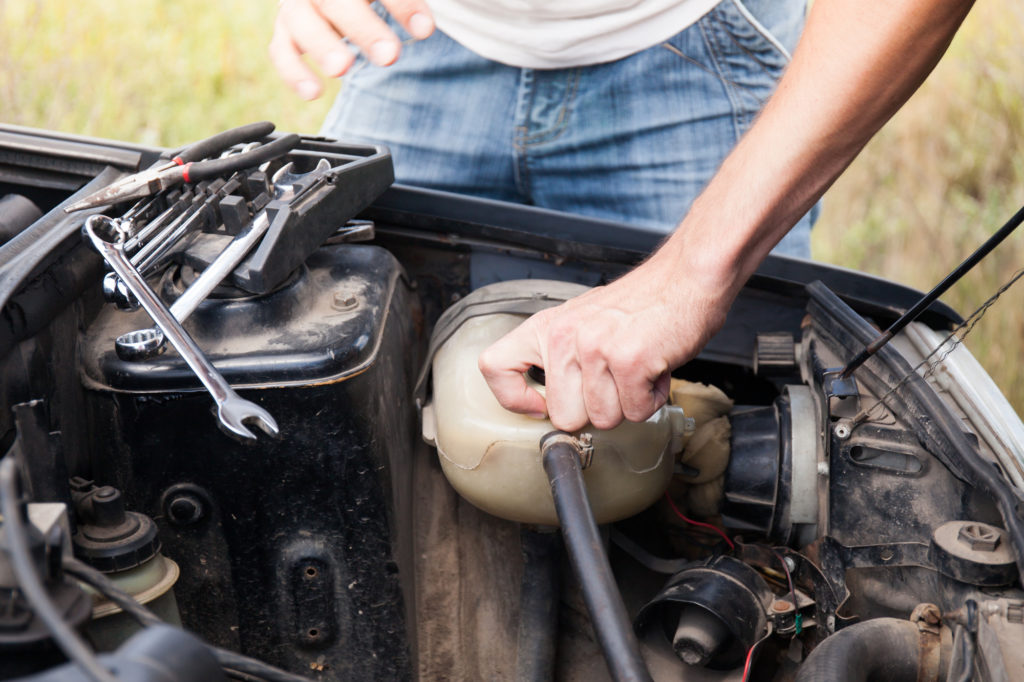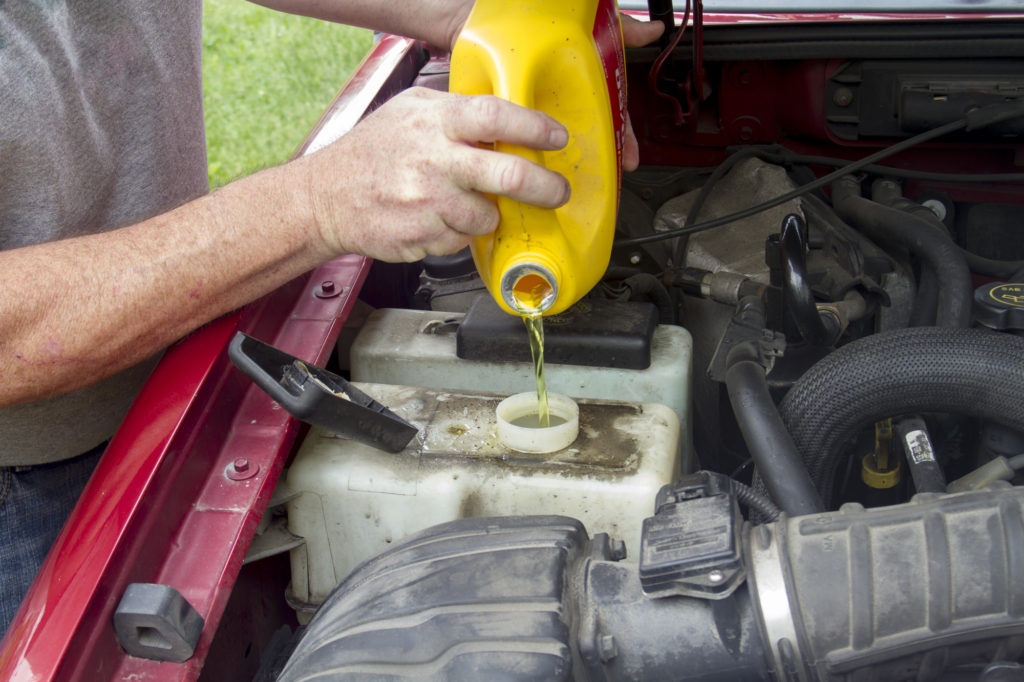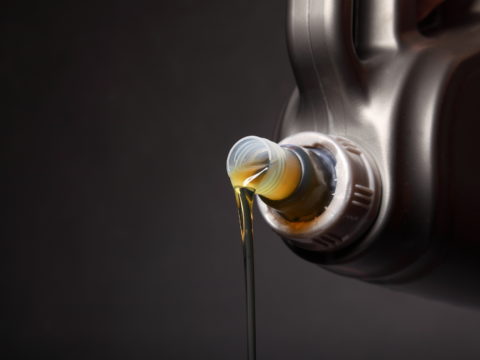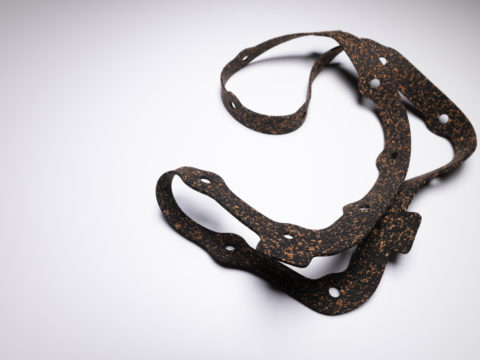When you’re checking your oil and the fluid on the dipstick doesn’t look quite right, you may wonder what’s going on. If the oil seems runnier, milkier, or if it has a sweet smell, you may have just discovered that you have coolant in your oil.
Now that you’ve diagnosed the issue of cool in your oil, let’s take a look at some potential causes so you can fix it. Otherwise, you could risk severe damage to your engine.

Contents
How Do You Distinguish Coolant From Oil?
Engine oil is brown and quite slippery. It has a bit of viscosity. So, it will cling to and coat a finger dipped into it.
The oil lubricates and protects the moving parts when an engine runs, keeping the motor running smoothly, even as things heat up from friction. As oil does its job and circulates in a hot engine for many miles, it darkens a bit, but its color remains rich and dark, and it feels slippery and a bit tacky.
On the other hand, coolant is usually a mix of water and antifreeze. This blend lives in the cooling system of your vehicle. Since antifreeze is often blue or green, the blended coolant has a bright tinted color. Antifreeze can also come in other colors, but it’s never dark like oil.
Antifreeze’s formulation often uses ethylene glycol. So it is sweet, syrupy, and quite dangerous if swallowed.
How Does Coolant Get in Oil?
Coolant and oil are both workhorses in your car. But they aren’t supposed to mix. When things are working correctly, coolant stays in the radiator and cooling system, and oil stays in the engine and lubrication system.
There are a few potential ways they can mix.
Leaking Head Gasket
On top of your engine’s block, there is a component called the cylinder head. The head gasket is a thin membrane sandwiched between the block and the head, where it provides added protection against leaks by improving the seal between the block and the head.
Coolant can enter the system and mix with the oil if the head gasket becomes compromised. Even small gaps can become big problems.
Blown Head Gasket
If your head gasket is damaged significantly, it’s not just leaking. It’s blown out. A blown head gasket is a serious condition because rather than a slow mixing of coolant into the oil, your car’s lubrication system will become filled with coolant much more rapidly. That can compromise the quality of your oil and lead the engine to overheat.
Cracked Head
If the cylinder head itself cracks, coolant will likely enter the oil in your car. You may even see white smoke coming from the exhaust as the coolant heats up in the oil and boils off, exiting through the tailpipe.
Damaged Oil Cooler
Some cars have a component called an oil cooler, which circulates the oil into a compartment where it is surrounded by a separate, larger chamber filled with coolant. This setup keeps the oil temperature lower than an engine without an oil cooler.
However, if the oil cooler develops corrosion or another problem that leads to a leak, some coolant may enter your oil.
Damaged Engine Block
If your engine’s main block cracks, you’ve got a big problem. Now, engine blocks are really tough, so cracking one is pretty rare. But, if you abuse your engine or it becomes starved for oil, it’s possible to do major damage.
So if you see early signs of coolant in oil, you need to act quickly to find the source of the issue and fix it. Otherwise, you risk doing more damage and costing yourself more money in s.

How to Detect Coolant in Oil?
The easiest way to detect oil in coolant almost always starts with opening your vehicle’s hood.
Losing Coolant
If you check your coolant reservoir, and it’s low, it went somewhere. The cooling system on modern cars is completely sealed, so any fluid loss is a sign of a leak. So, even a small change in fluid level may be a sign that your coolant is entering your oil.
There are other types of coolant leaks, so it’s a good idea to inspect the radiator, coolant hoses, and overflow tank for simple leaks too.
Syrupy, Sweet Smells
If your car smells faintly of burning sweets, or a kind of pungent syrup smell after it gets hot, you may have a coolant leak. If you pull the dipstick to check your oil, and that smell is very pronounced, that likely means the coolant has entered the oil.
Milky, Runny Oil
Coolant is much thinner than oil, and the change is usually pretty obvious when they mix. Instead of thick, dark oil, it will appear chalky or even white and will be much thinner and runnier than it should be.
Frothy Oil
If your oil looks more like a latte than it did when you first poured it into the car, it may be due to coolant mixing in. That’s because coolant will sometimes turn the oil a bit chalky and also introduce air bubbles. The result is a frothy and diluted mixture that doesn’t work as well as good old oil.
Puff of White Smoke
If you start your car and see a puff of white smoke come out of the exhaust, it could be due to coolant in your oil. The engine’s combustion forces the coolant to burn, and the result is often either a big puff of whitish smoke from the tailpipe when you start the car or even a steady stream of smoke as you drive.
Dangers of Having Coolant in Your Oil
The big danger of having coolant in your oil is that the oil’s lubrication and cooling properties become compromised. When the oil becomes diluted with coolant, it doesn’t coat components as well as it needs to, and temperatures will climb under the friction created by running the engine.
Plus, since the oil has been watered-down, it isn’t as good at maintaining its cooling properties, so the problem will snowball.
What to Do if You Detect Coolant in Your Engine Oil
If you know your car has coolant in the oil, you have a few steps to take.
Gather Tools Needed
You’re going to want to try and find out where the coolant is entering your oil. So you will need a flashlight to look around the engine. You might also want to purchase a commercial gasket sealer, an oil additive that may help treat certain sources of leaking coolant.
Step 1
Look for obvious leaks from the cooling system. If you see coolant dripping, you may be able to zero in on what’s going on and isolate the issue.
Step 2
Consider changing the oil. If you have a minor head gasket issue, it takes a long time for the coolant to mix into the oil, and you can still drive the car without addressing the leak, at least for a little while.
Step 3
Flush the cooling system. If your coolant boiled or has deteriorated, replacing it might help slow down a minor leak.
Step 4
With fresh oil and coolant in your car and no major obvious leaks, any further mixing of coolant in your oil means you have a damaged seal between the head and the block or a leaky oil cooler. Consider adding your gasket sealer and repeating the flushing process following the manufacturer’s recommendations.
Step 5
If you do everything else and still find coolant in the oil, you have to pull the cylinder head and inspect the block and head for damage. If there isn’t any damage, you can simply change the gasket and put things back together. If the head or the block are cracked or warped, you’ll be in for more repairs.
Should You Drive a Car With Oil in the Coolant?
The bottom line is that it’s not a good idea to drive when your coolant and oil mix. The cooling and lubrication systems aren’t meant to mingle, and when their fluids mix, nothing good will come of it.














